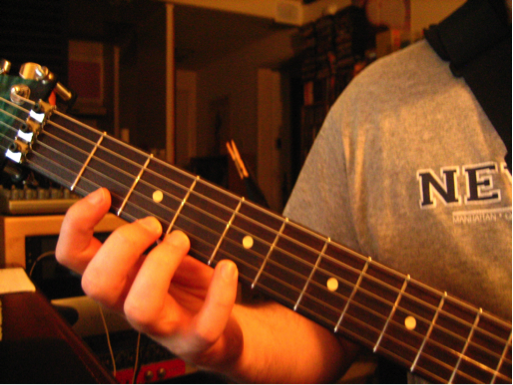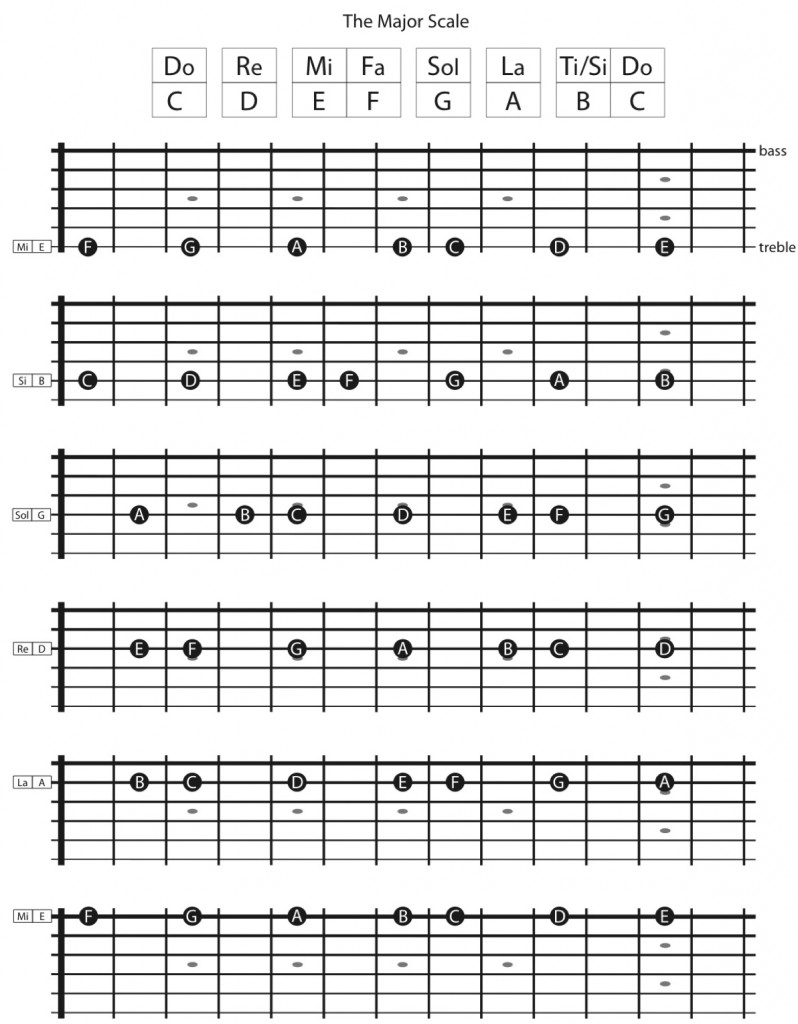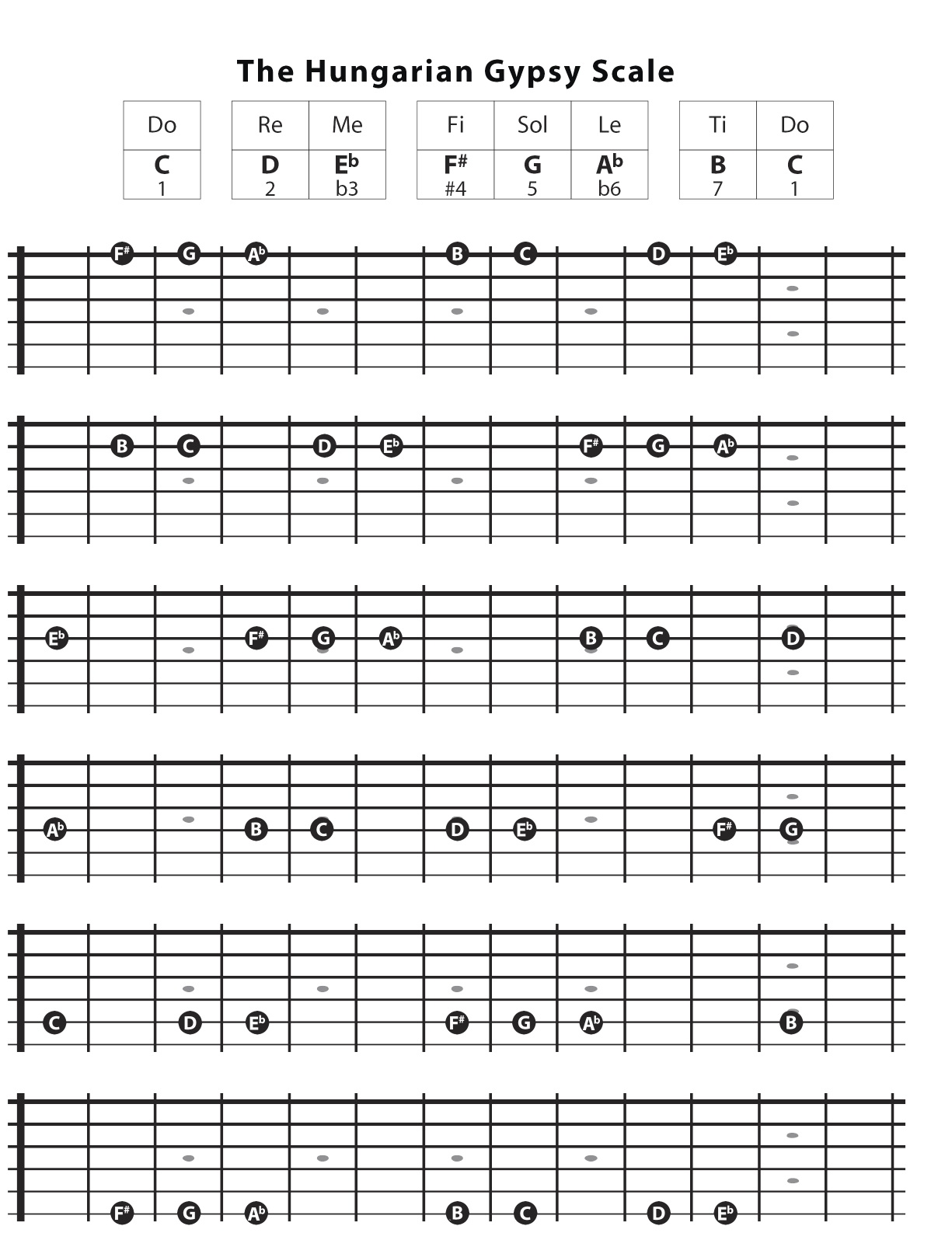The Best Way To Learn New Scales: 1 String At A Time!
Single string soloing is one of the really important chapters in the ZOTZinMusic guitar teaching curriculum.
Even guitar students who have been playing many years and who consider themselves “advanced”, admit to getting great benefits and results out of the single-string exercises I give them.
You get all the benefits that piano players get.
I have always found that piano players tend to be the more advanced when it comes to an understanding of music theory. More importantly: they always much better understand how all theory relates to their instrument.
The reason for this is obvious.
It is much easier to visually see all music theory mapped out on a piano than on a guitar.
This is also the reason of course why all music theory books are written from a piano perspective, using the piano keyboard as a means to explain the theory.
There is a direct visual connection, between the theory that explains the structures of scales and chords, and the linear organization of the piano.
You don’t have that advantage on guitar, where everything is all over the place, with no immediately apparent visual organization to the note locations.
Music Schools Focus Too Much on The “In-Position” Approach.
To augment the difficulty: guitar programs at music schools are always centered on learning the fretboard in position.
Students then learn every fingering for a scale one position at a time.
“In position” playing means: you stay in 1 location with your hand, each finger taking an adjacent fret.
For example:
When you play in 2nd position; your index is taking all the notes on the 2nd fret, your middle finger takes all the notes on the next (3rd fret), your ring finger takes all the notes on the 4th, and your pinky covers the 5th fret notes.

With this approach, you play all the notes of the scale starting from the bass string up to the treble string and back down staying in 1 location with your hand.
The following example shows such a fingering for a C major scale.

Unfortunately: this is not the most effective way to learn a scale.
This approach forces you to memorize finger patterns, without you really seeing under your fingers what the scale structure is that you’re playing.
It also leads to a playing style, where the improviser is focusing on shapes rather than sounds.
When music becomes geometry, and the eyes take over from the ears, the improviser ends up sounding less interesting than he could be sounding.
The 3 Reasons Why You Should Learn on 1 String BEFORE You Learn In Position.
There are 3 things that make in position scale study ineffective if it isn’t preceded by single string learning first.
- Too many notes to deal with.
Think about that: there are only 7 notes in a scale. (do re mi fa sol la si/ti ).
However; with “in position” playing, there’s not 7, but 24 notes thrown at you all at once. (4 fingers covering 4 frets over 6 strings = 24frets).
Logically this is way too much information to start with for any guitar student.
When however you focus on 1 string at a time, you only deal with 7 notes (over 12 frets) at a time. - No visible organization/structure.
All the notes are all over the place on a guitar neck in position.
It is close to impossible to see any logical structure connecting the notes on the different strings.Because of the lack of a clearly visible note organization over multiple strings, it is challenging for a guitar student to understand what is going on in the beginning stages.
It thus takes a considerable amount of time to memorize the note locations.
People tend to memorize information much faster if there is a clearly visible logic behind things.This is why: when you focus on 1 string at a time, you have ALL the advantages that piano players have.
When piano players put their hands down on their instruments, they see all the music theory linearly spread out under their fingertips.You do NOT have this advantage as a guitarist when you think in position.
However; you DO have that same advantage when you think like a piano player on guitar: LINEARLY. - Conceptually too complex:
There are too many directions and dimensions to worry about “in position”.
This ties into the previous points discussed.In position: you play 2-3 notes on one string (horizontal), then go to the next string (vertical), where you play a couple of notes linear again (horizontal), then vertical again to the next string, linear again for 2-3 notes on that string, then vertical again to the next string, and so on.
You basically have to think too many dimensions simultaneously, which is much harder than linear thinking.
One string at a time, your only options are: left to right and right to left.
These are also the only 2 options a piano player deals with.
See And Learn Scales On 1 String.
The following example shows the same scale as above, on each individual string.

It takes students much less time to learn a scale and to be able to use that scale on 1 string at a time.
The best system to learn this is
- Learn what the interval structure is of the new scale and what the notes are. Memorize them!
- Find these notes on the high E string and solo over a chord progression or song that that scale will work over.
- Once you have this down, move on to the B string and do all of the above.
- Then move on to the next 4 strings, 1 string at a time, going through the above steps.
- Once you have the notes down on every string, start soloing playing notes on 2 adjacent strings.
- Once this gets comfortable, move on to the next 2 adjacent strings, till you have all 5 string sets covered.
- Next step: combine 3 adjacent strings. Maybe you can stay in 1 location at a time. This would be like soloing in position, but only on 3 strings at a time.
- Work this up, adding one string at a time, till you have the full in-position fingerings covered.
This is a much more logical, better organized, and infinitely more effective approach to learning scales.
Students who learn scales this way understand the scale on a much deeper level and use it much more creatively.
Single-String Put to Practice
To put this to the test, have fun with the following Hungarian Gypsy scale.

Notice how much less time it takes you to be able to improvise with the scale if you learn it 1 string at a time.
You can pretty much instantly use the scale.
After all: you only have 7 notes at a time to focus on, and they all appear only once on the string.
Put on a C minor groove, and go nuts playing gypsy flavored guitar solos.
This technique of learning scales will greatly boost your scale knowledge.
Be prepared to see yourself become a much better improviser too. 🙂
Conclusion
Hit me up anytime at vreny@zotzinmusic.com if you have any questions, or if you would like to book a lesson.
These free lessons are cool, but you will never experience the progress, joy, and results that my students experience in lessons when you’re learning by yourself from blogs and videos.
That is why people take lessons: way better results and progress, much more complete information, exposed to way more creative ideas than you can get from a blog or YouTube video.
There is only so much that self-study can accomplish.
If you want to see amazing results and progress in your guitar playing, buy your first lesson here and get started ASAP.
You’ll impress your friends and loved ones in no time with your guitar playing!
Consider donating any small amount to help me keep this blog going.
Thank you for your support!



George Says:
I’ve stumbled upon this approach after years of struggling to solo in bluegrass jams. I’m attempting to take it one step further and use the scale degrees to play the melody of the song, as I tune my voice to the scale degrees as i sing along with it… in this way, the guitar becomes A tuner for my voice, and voicing the scale degrees trains my ear to learn to “visualize” the sound. I’m still at the beginning of this process so I can’t say that I’ve got it all down but wow, has taken this approach catapulted my understanding of music, just as you point out that it will!
December 14th, 2023 at 3:13 pmvreny Says:
Thank you for sharing, George. I am happy this is helping for you and that you are applying this approach. Everybody always wants to learn or practice scales all over the neck in all positions, but most have a hard time even being able to play that scale on 1 string. I believe that is always where it starts. Top pro guitarists very often play melodies or melodic phrases in solos on 1 string. Steve Vai and Joe Satriani are great examples of that. The reason why they like doing that is that when you play melodies vertically, you get timbre differences between the notes in the melody. But when you play the notes in a melodic phrase on 1 string, the whole melody sounds more coherent and sonically more even and together because every note then has the same timbre and quality. Keep me informed on your progress. You’re doing everything right man: thinking scale degrees indeed is a great thing to do, AND singing them along while playing is A KILLER IMPORTANT drill.
January 7th, 2024 at 6:27 pm